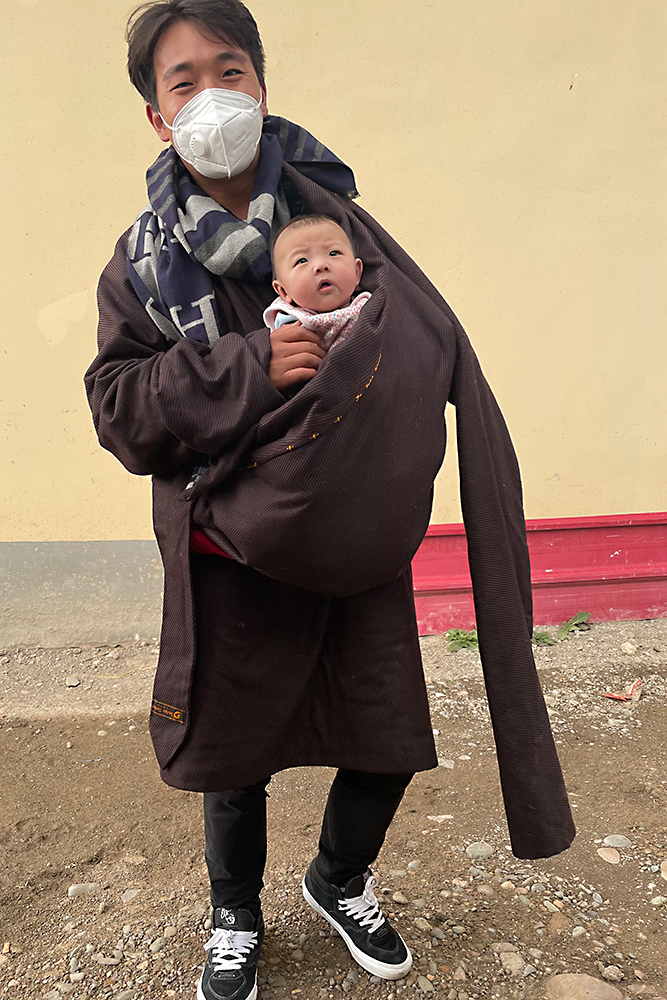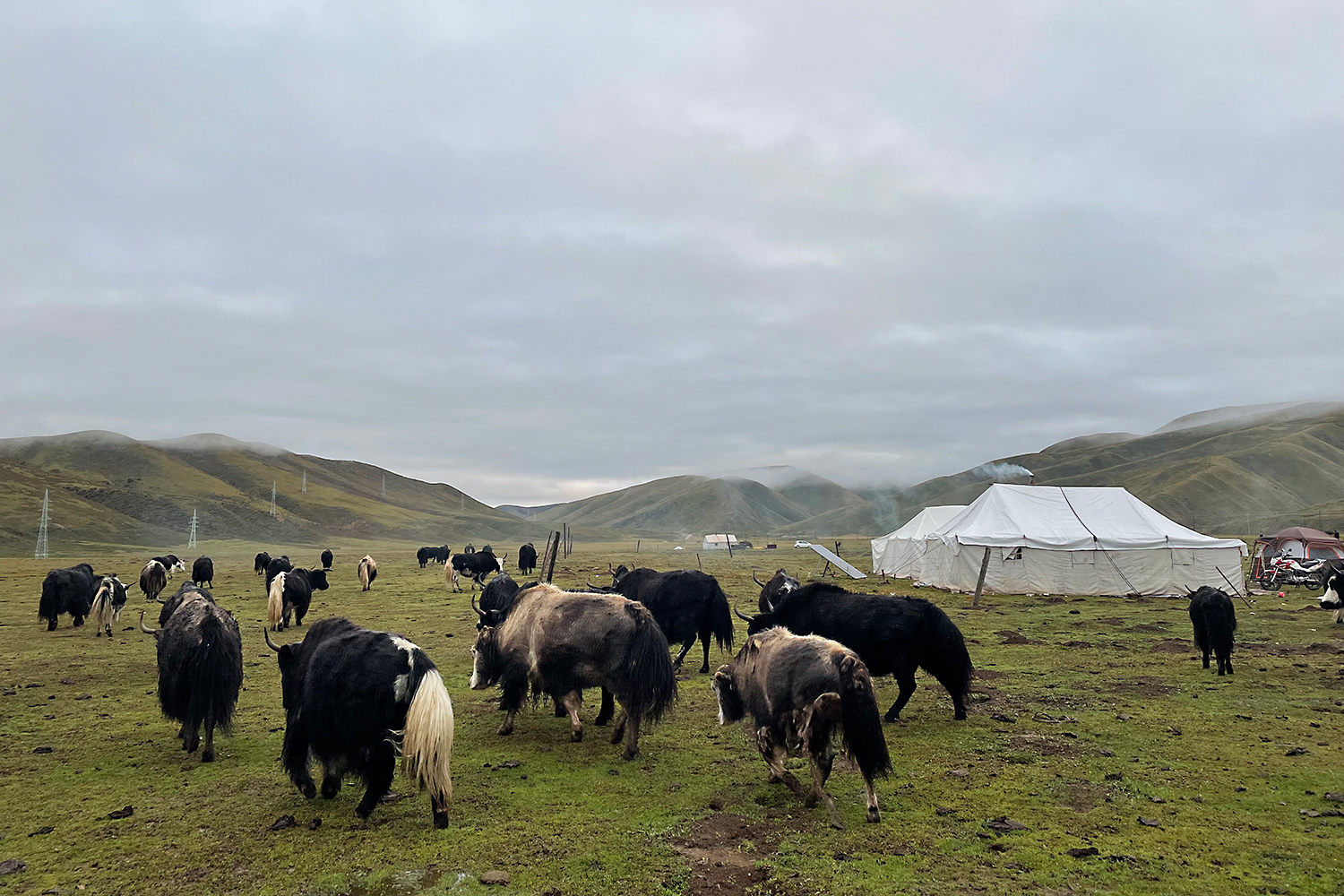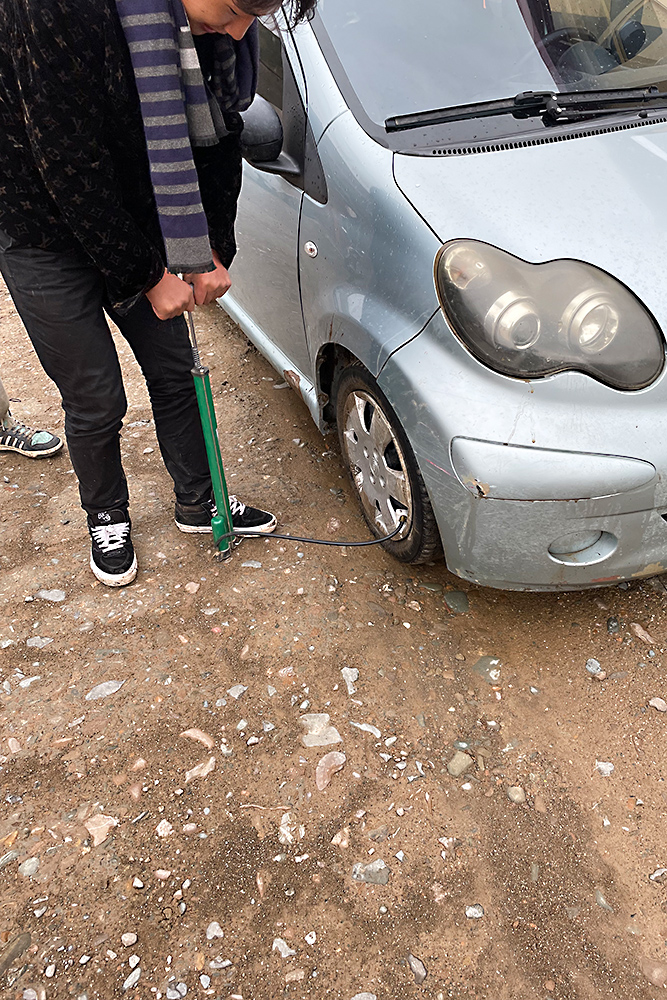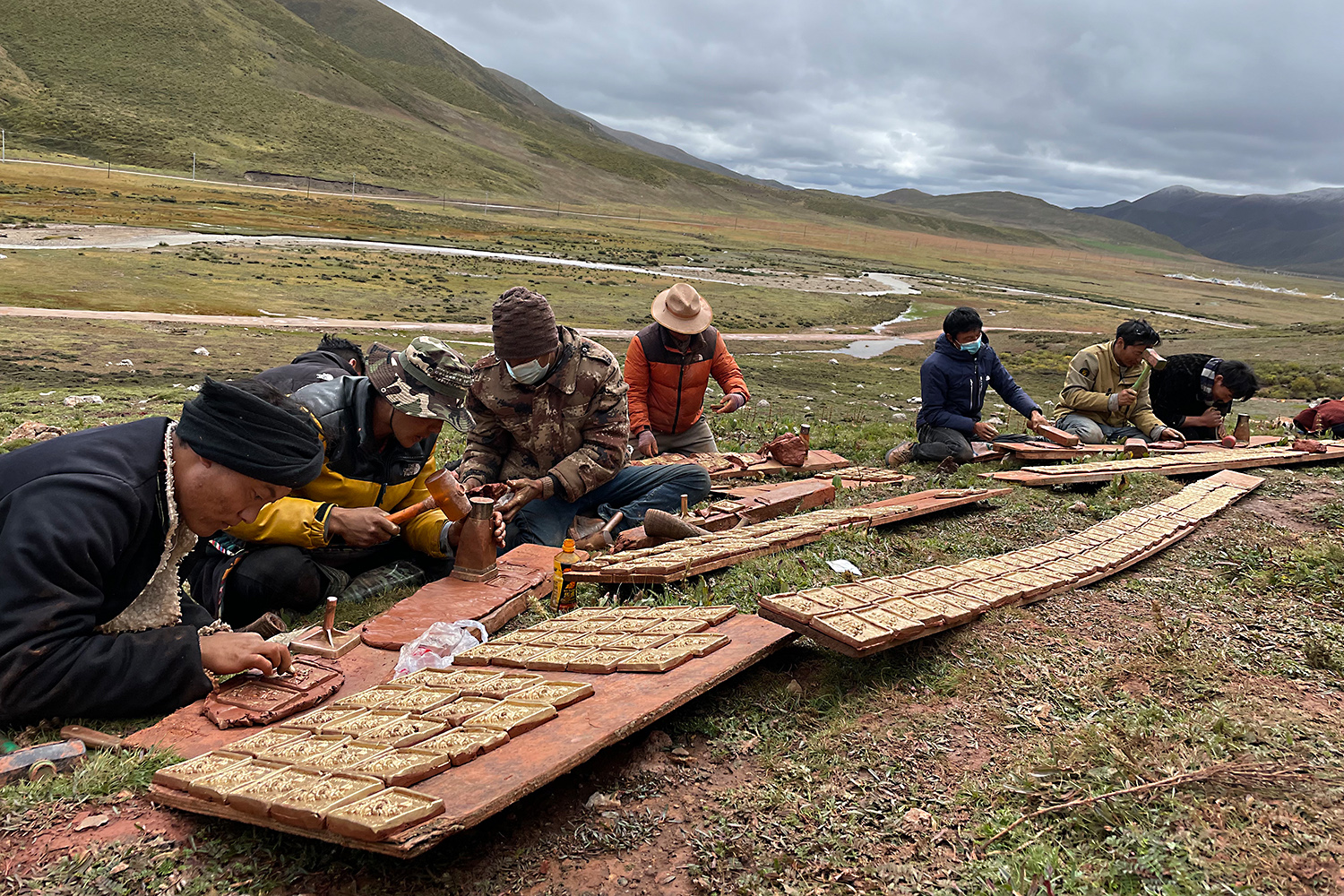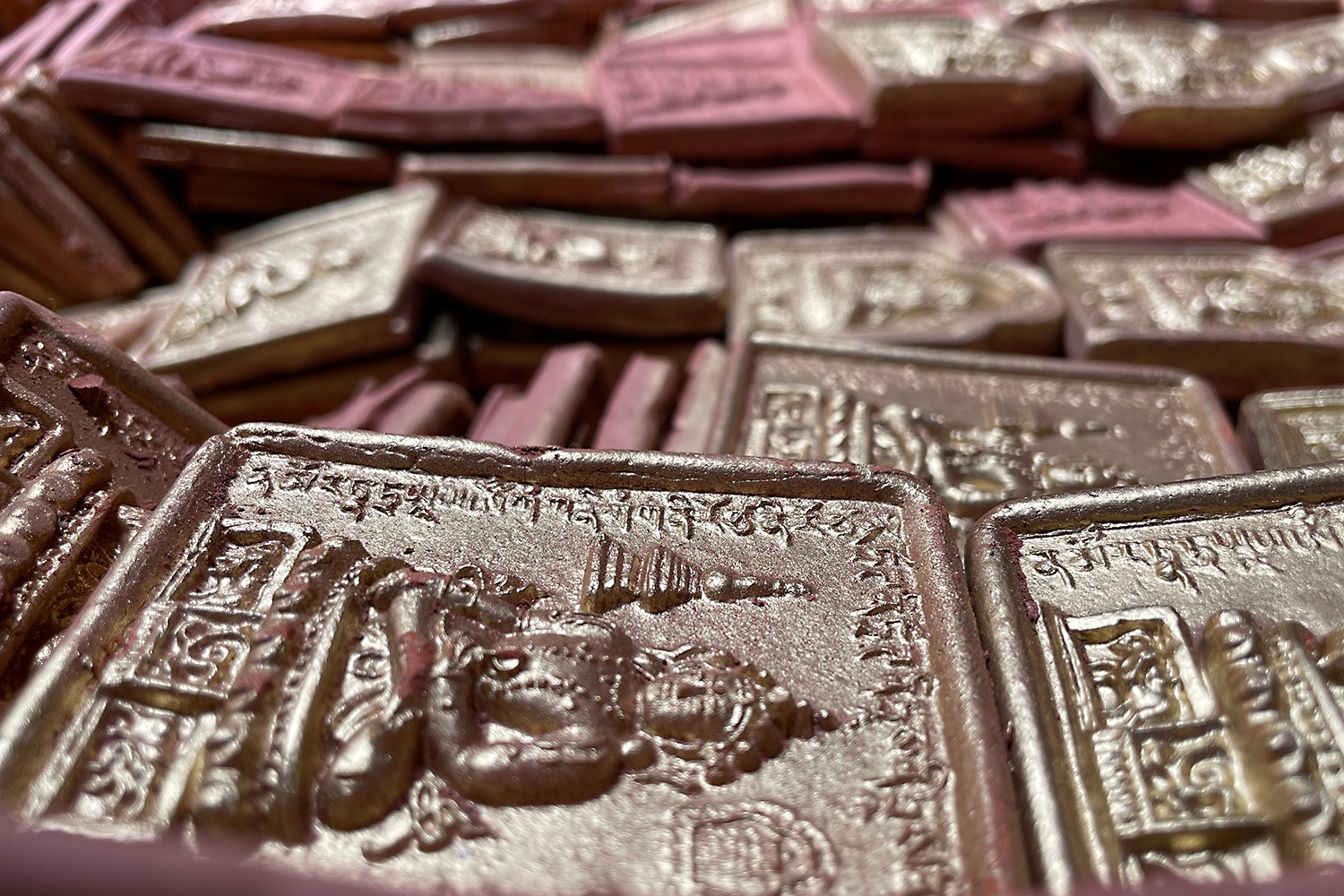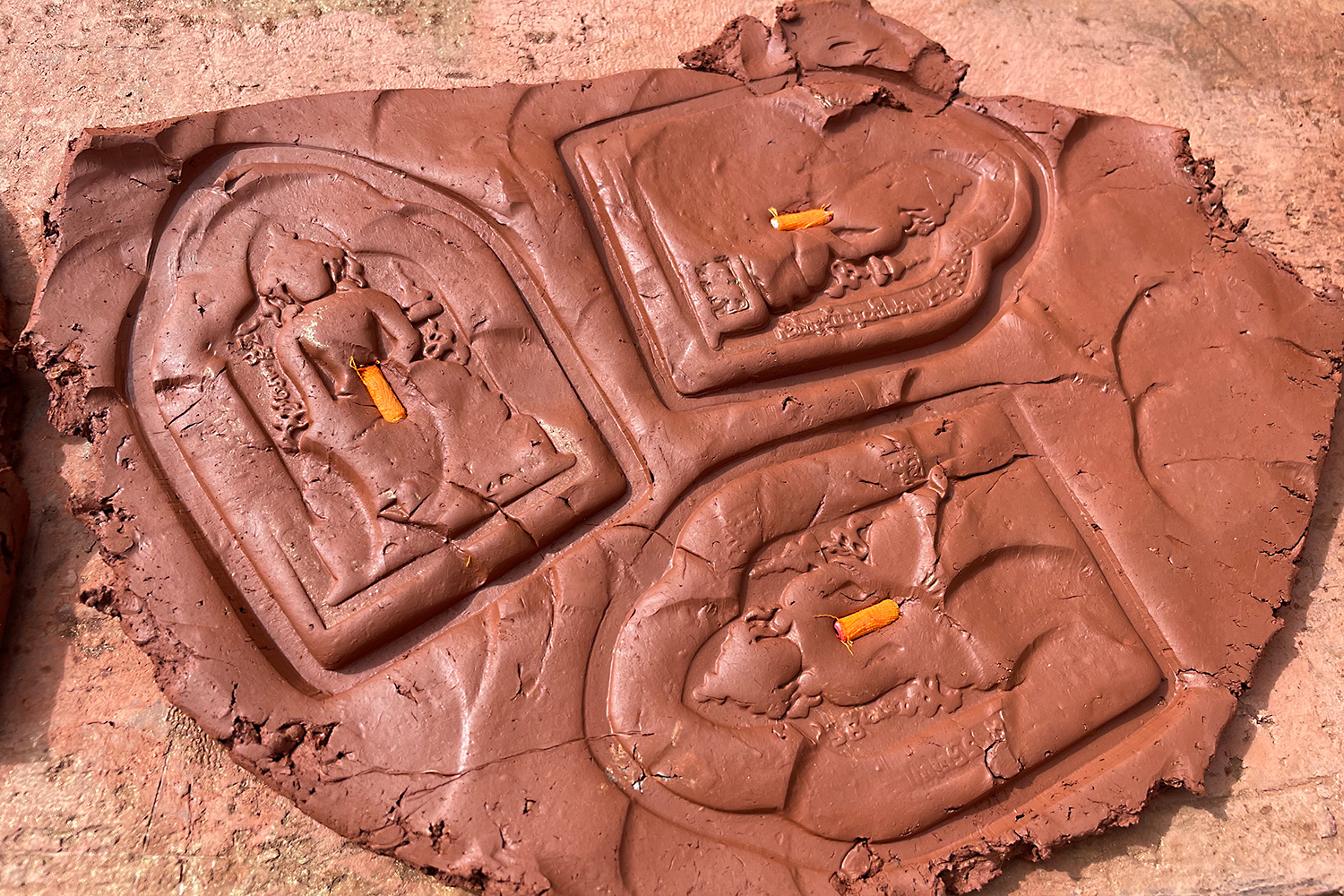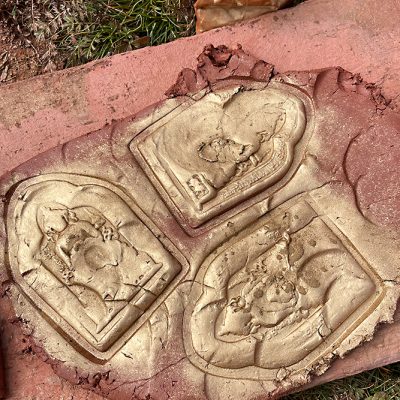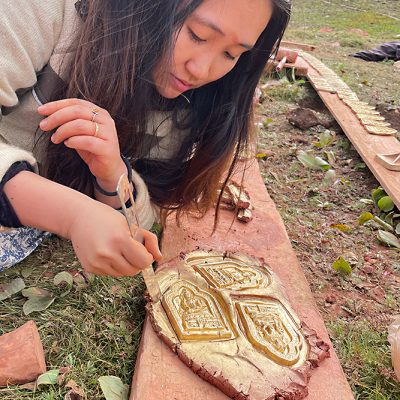An invitation to join the Tsa Tsa ritual Living with Yak Herders in Tibet, Part 3: 1,000 clay tablets for a deceased person
Sometimes you have to deviate from your actual research plan and take new paths to make exciting discoveries. Like Siran Liang from the Institute of Geosystems and Bioindication (IGeo), who during her “Deep Hanging Out” with a yak-owning community in Tibet is repeatedly invited spontaneously by families to their home. In the third part of her logbook, the PhD student tells of a Tsa-Tsa ritual for a deceased person.
I was on my way to visit an environmental NGO in Baiyu county in Golok (Qinghai province). A young man with a baby covered in his Tibetan coat sat next to me in the bus. It was obvious that I didn’t look like a local, so he was curious and asked me why I was here. After I told him that I was doing research about the grassland and the herders, he invited me to visit his family on the grassland. Visiting a stranger’s home on a grassland wasn’t on my research plan. But I am glad I did. I trusted my guts.
Pema was 22 years old and just graduated from a college. He admires Elon Musk and read his autobiography. At the time, he and his wife were considering about their future. They both have higher education degrees, but his parents wanted him to stay on the grassland and continue yak herder’s livelihood, as it means security and stability. He himself was ambitious and wanted to go to the bigger cities or even abroad. Becoming a waiter in a casino in Macau was one of the many plans he told me.
Pema picked me up in Baiyu with a car he borrowed from a friend. I ended up driving most of the time because he hasn’t passed his driving exam yet. The car wasn’t in its best condition: only one of the front lights worked. Windshield wiper didn’t work. The car made sounds which made me worry the entire car could fall apart any second. I was stressed the entire drive, but Pema was very relaxed. After over an hour of drive, we drove off the gravel road and headed to his family’s tent. It was already dark when we arrived and cooked yak meat was waiting for me.
After dinner, it was time for bed. The parents slept on beds. Pema’s sister and I slept next to each other on the ground. She tucked me in and made sure I was warm enough. Pema, his brother and brother-in-law slept in other tents. Raindrops hit the tent so loudly that I couldn’t fall asleep for quite long time. The second day, Pema told me he had a wonderful sleep because of the rain. Listening to the rain in the night and falling asleep was the best feeling, said Pema.
The next day, just when we were about to set off with our car, Pema’s mother pointed out that one of the front tires didn’t have air anymore. Following Pema’s suggestion, we drove the car nevertheless and later pumped the tire with a bike pump from a friend of his. I was really glad we made it so far.
Pema was unwilling to tell me where we were going and said it is a surprise. It was indeed. A group of people were making Tsa-Tsa for Pema’s relative who recently deceased. The kind of Tsa-Tsa they are making a gold-plated votive clay table. A monk, consulted by the family of the deceased, told them that this deceased person needs a thousand of clay Tsa-Tsa. There are also other forms of Tsa-Tsa, such as wind Tsa-Tsa, water Tsa-Tsa, fire Tsa-Tsa. Making Tsa-Tsa is beneficial for the deceased, such as for a better rebirth, and is also a merit-accumulation action for the makers. Hence, in summer 2021 the whole family and a random ethnographer (I) worked together to achieve the goal of making one thousand Tsa-Tsa. On the hill, some young men were smashing and processing red clay. Many others, men and women, were sitting on the grass and in the tents, concentrating on producing Tsa-Tsa.
People were friendly and taught me how to make Tsa-Tsa. First, one needs to use metal mold to give a rough shape to the clay. People use small hammers or yak horns to form the metal. Once you can see a vague image of the deity, it is time to insert a one-centimeter-long orange color roll of scripture in the middle of the deity.
After that, one shall add a bit more clay on top of the scripture and then spread gold powder on top of the entire tablet. The next step is to use the same mold to press the same plate again. This time we need to hammer the mold hard in order to get a clear print of image. At the end, one can use a knife to carve the image out of the rest of the clay. I made roughly 50 Tsa-Tsa myself and I am pretty sure that I have gained some merits which will be helpful after I am dead, perhaps a fast-track to reincarnation.
- Tsa- Tsa powdered with gold. Picture credits: Siran Liang/TU Braunschweig
- Tsa-Tsa molded again. Picture credits: Siran Liang/TU Braunschweig
- Siran carving Tsa-Tsa. Picture credits: Siran Liang/TU Braunschweig
*Pema read this article and agreed that I can use his photos. I thank Nicole Börner for her editing and advices for my logbook articles.

